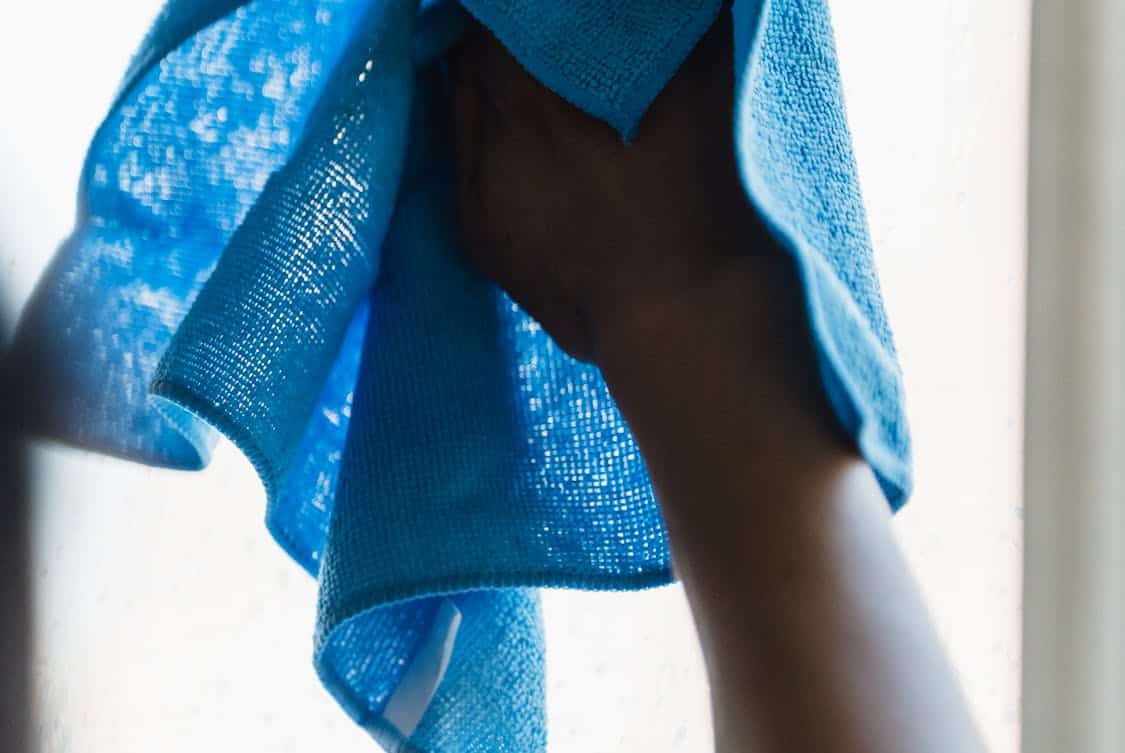Keeping windows clean and streak-free is a time-consuming task, especially for properties with many panes. Fortunately, there are several simple steps you can take to cut down the cleaning time.
Start by ensuring that you have all the necessary equipment at hand. Avoid paper towels, which leave lint behind, and instead opt for a lint-free microfiber cloth.
Use a Detergent-Based Cleaner
A simple detergent-based cleaner like dish soap or vinegar will get your windows sparkling clean and smudge free without the use of abrasives, which can scratch window glass. Unlike ammonia-based cleaners, detergent-based cleaners also don’t leave streaks or a film that attracts dirt and moisture. If you don’t want to make your own homemade window cleaner, a commercial product like Simple Green Professional Grade Glass Cleaner is available in many grocery stores and hardware stores.
Before you start cleaning, lay down a large towel to catch spills and drips. Mix 1 cup of Simple Green with 3 quarts of water in a bucket or pump-up sprayer. Apply the solution to the surface of the window using a lint-free microfiber cloth or paper towels. Use a zig-zag motion to work the solution into your window, then use a dry microfiber cloth to buff away any remaining soapy residue and prevent streaks.
You can also clean your windows using a mixture of equal parts white vinegar and water in a spray bottle. Add a few drops of essential oil to your cleaner for a pleasant fragrance. Just be sure to test the mixture on an inconspicuous part of your window to make sure the oil won’t leave a mark or affect the clarity of your glass.
If you’re cleaning your windows with a squeegee, remember to wipe the squeegee itself between swipes, as it can collect lint and debris, too. Also, avoid cleaning your windows in direct sunlight, as the heat can cause the solution to dry faster than you can wipe it off, leaving behind water spots and streaks. Instead, clean your windows on a cloudy day.
Clean on a Cloudy Day
There’s nothing worse than spending ages cleaning windows, only to find that they’re covered in annoying streaks and smudges once they’ve dried. Luckily, there are some things you can do to prevent this from happening. First, make sure you’re using a quality cleaning solution. You can buy a commercial cleaner or try making your own from vinegar and water. Secondly, be sure to avoid direct sunlight when cleaning. This can cause the cleaning solution to dry too quickly, leaving streaks behind. Finally, make sure you use a squeegee to remove any excess water from the window surface after washing.
Before you even think about spraying that cleaner, it’s a good idea to prep the area by removing any curtains or blinds and giving the frames and handles a quick wipe-down. This will prevent any dirt from being dragged onto the window itself and help you get a better clean. It’s also worth removing any window screens if you have them.
It’s a good idea to start at the top of the window and work your way down, making sure you don’t miss any corners or edges. Once you’ve finished, it’s a good idea to leave the window to air dry. If possible, do this on a cloudy day to avoid having the windows dry too quickly and leaving behind water marks.
If you can’t manage to air-dry your windows, you can also use a microfiber cloth to eliminate any water smears. If you’re really struggling to keep your high windows clean, it may be time to call in the professionals. If you’re in Orlando and want to save time while achieving sparkling results, consider hiring a professional window cleaning Orlando service to handle the job efficiently.
Use a Squeegee
A window squeegee is the most effective way to eliminate streaks. It’s also useful for other jobs around the house such as removing mildew and hard water stains from shower doors, windowsills, tile, cooktops, and more. To keep the rubber blade of a window squeegee in top condition, wipe it with a towel periodically.
A clean, streak-free finish can make any room look brighter and more inviting. However, cleaning windows can be difficult, especially when it’s not done properly. Here are a few tips from experts that can help you achieve a streak-free, streak-free finish:
To avoid creating puddles on the window, wet the glass with a sponge or a microfiber cloth dipped in soapy water. Start at the top of the window and work your way down, making overlapping strokes as you go. If necessary, use a damp microfiber cloth to remove stubborn dirt from corners and between mullions or muntins.
For best results, use a natural sponge (such as a cellulose sponge) or a hog-bristle brush rather than a synthetic one. These are firmer and more absorbent, which can help to loosen the grit that gets stuck to the window surface. After the sponge or squeegee has removed all of the dirty water, rewet the blade with a rag or towel.
Avoid using paper towels because they can leave behind streaks and can be expensive. Instead, use a soft, lint-free microfiber towel or a cloth that’s been dabbed in vinegar solution to prevent any remaining water from drying onto the squeegee blade. To avoid marring the window frame or sills with crusted soap suds, wipe down the frames and sills as you complete your job.
Use a Microfiber Cloth

When it comes to keeping your windows smudge-free and streak-free, microfiber cloths are your best friends. They are the safest and easiest way to keep your glass, mirrors and window screens clean. They are made up of super-fine, woven polyester and polyamide strands that can easily pick up dirt and debris without scratching the surface of the glass. The cloths can be used dry for dusting, or slightly dampened with a water-based cleaner to wipe away soap residue. They also have a honeycomb texture that helps to nab hard-to-remove water spots and smudges, leaving your glass shiny and streak free.
Unlike paper towels and traditional rags, microfiber cloths don’t leave behind any lint particles and can be reused several times over for a more thorough cleaning. However, it’s important to wash your microfiber cloths properly to avoid damaging them. Only use cold water, and skip fabric softeners and bleach, as these products can damage the cloth’s fibers. It’s also a good idea to rinse the cloth before each use, to remove any residue from previous cleanings.
If you prefer using a homemade solution, try mixing equal parts vinegar and water with a few drops of dish washing liquid to cut through grease or grime. You can even add a few drops of rubbing alcohol or distilled water for a more powerful cleaner. Essential oils can also be added to homemade glass cleaners for a fresh scent.
For the most streak-free results, it’s helpful to work in small sections at a time when cleaning your windows. Be sure to wipe the frame, sill and tracks before proceeding to the window itself. Afterward, dry the windows with a microfiber cloth to avoid smudges and water spots.
Use Water
When using a spray cleaner on windows, apply it in a zig-zag pattern to avoid streaks. This technique helps distribute the solution evenly, gives you more control over your application, and removes excess cleaner from the window frame and sills. The same technique works for wiping down the squeegee between passes. Also, be sure to use the dry part of your cloth to wipe away any cleaning solution that pools on ledges and sills.
The best time of day to clean windows is when it’s cool, like in the morning or on a cloudy day. Bright sunlight can cause the cleaning solution to dry too quickly, leaving water spots and streaks. Windy weather can also create dirt and debris that sticks to the glass surface, and if you live near trees or construction sites, high winds may blow pollen or other particles onto windows.
Before you clean, dust or vacuum the window frames and sills to get rid of any loose dirt and cobwebs. This will prevent you from dragging that dirt over the windows as you wipe.
Once you’ve removed the excess dirt, wet a cloth or sponge and wash your windows with warm water. Adding an ounce of dish soap to your water will help cut grease and grime, but you can use a simple homemade cleaner that contains only water and vinegar as well. A good quality microfiber cloth will work better than paper towels, which leave behind lint. When you’re done, dry the windows with a squeegee or a clean, lint-free cloth. Work from the top down to avoid drips. Also, remove the window screens and wash them with a soft brush and sudsy water before putting them back in place.




